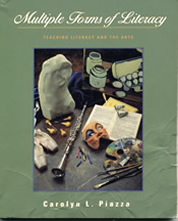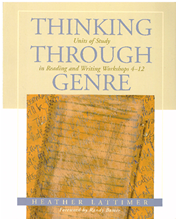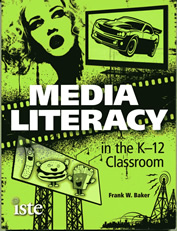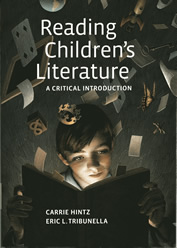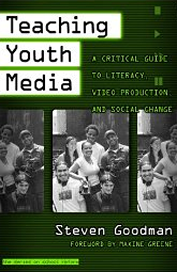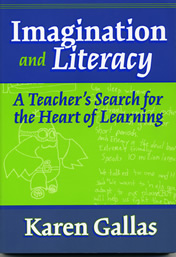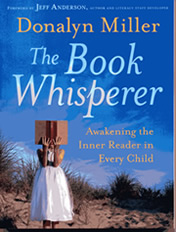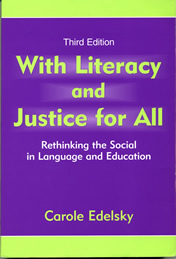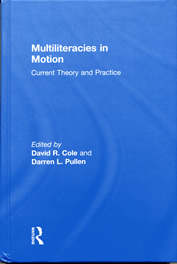Welcome to
Literacy through Literature for Children
EDU 600 (3 Credit hours)
June 2013
Catalog description: An advanced course in children's literature that will focus on all genre including contemporary authors and multicultural materials for elementary school applications. An emphasis will be given to the integration of literature across the curriculum to facilitate literacy.
Children's literature in this course includes literature in all forms of media and how they may or may not impact students in a variety of ways. Especially their impact on students' development of literacy. Students will be provided with many opportunities to connected class content to their personal areas of interest and professional needs.
Course information: Instructor: Dr. Robert Sweetland
Email: rosweet1@wsc.edu
Phone: 375-7374
Office: Brandenburg 123 B
Office Hours: posted by office door and appointments arranged on request
Course Texts
When ever I select texts for class I review many and select few. This summer after I narrowed it down to four very different texts based on what is literature and how to use it to facilitate literacy, I stopped and decided to let you select one of the four options for your study:
- A multiliteracy approach of using literacture to faciliate literacy
- A reading and writing approach t using literature to faciliate literacy.
- A media approach to using literature to faciliate literacy.
- The traditional text approach to using literature to faciliate lteracy.
Select from ONE of the first four texts below.
Suggested for those that want to move literature beyond books and wonder how. Would also be beyond media.
Piazza, Carolyn L. (1999). Multiple forms of literacy: Teaching literacy and the arts. Columbus, Ohio: Merrill.
This book is a few years old and I have used it previously. It is the best on the market with a broad definition of literature and literacy as multiple forms. Further it presents a framework to operationalize understanding and appreciation of different modes of literature or story telling. The framework can be used to bridge mediums of literature, across cultures and social differences and to use multiple forms of literature for topical units. This fits the second goal - a broad approach to literacy even beyond a Multi-Media approach. If you are interested in literacy as story telling in all forms, then I would encourage you to investigate this book. Support information for the book. See third yellow band toward bottom of page. (233 pages)
Suggested for everyone who wants practical examples of how to develop literacy through books and real life reading and writing experiences. The title is right on. The genres are memoir, featured article, editorial, short story, fairy tale, and response to literature (review and essays). (269 pages)
Heather Lattimer (2003 ). Thinking Through Genre: Units of Study in Reading and Writing Workshops Grades 4-12. Stenhouse Publisher, Portland.
Suggested for everyone who wants a broad definition of literature to include multiple medias. Includes practical examples of how to develop literacy through many medias. The title is right on. Six chapters include What is media literacy; teaching media literacy; visual literacy; advertising; moving images;and representations, bias, and stereotypes. The information incudes numerous URLs with very good information to use in the classroom. (152 pages)
Frank W. Baker (2012). Multiple Literacy in the K-12 Classroom. International Society for Technology in Education. Eugene, Oregon.
Suggested for everyone who wants a solid textual approach to literacy through literature as books. The title is right on. The 12 chapters include: Historicizing childhood; Early history of children's literature; Poetry; Fairy tales; Picture books, visual media, and digital texts; Demosticity and adventure; Historical fiction; Nonfiction - history, life science, life writing; Fantast, realism, adn genre fiction; Race ethnicity and culture; Genders and sexuality; and Censorhip and selection. This if for the lover of literature and the English or literature teacher in any of us. (455 pages)
Heather Lattimer (2013 ). Reading Children's Literature: A Critical Introduction. Bedford | St. Martin's, Boston.
Recommended books for additional reading:
Suggested for those interested in using media or other focus areas to motivate students to achieve beyond every ones expectations. Students in the book are high school students, however the message can be for all.
Goodman, Steven. (2003). Teaching Youth Media: A critical guide to literacy, video production, and social change. Teachers College Press, New York.
In his book Steven describes his 20 plus years of working with inner city youth and video recording equipment to explain his philosophy and real life examples of success he and others have had bringing inner city youth to the world of literacy in books and writing. Not survival literacy that many schools are willing to settle on for these students, but IVY League literacy so they can make it in the scholarly world of college and later in life in literary fields.
Suggested for preschool and primary elementary to review how this author supports the importance of imagination for literacy including all language arts/reading.
Karen Gallas (2003). Imagination and Literacy : A Teacher's Search for the Heart of Learning. Teachers College Press, New York.
Students without imagination are unable to visualize the possibilities of what they read, they only decode words. Without rich experience and opportunities to imagine readers do not create vivid images possible from the writing in quality literature. As a result pleasure is not derived as a response to their transaction with the written word. This book addresses this problem and how to help all students create better imaginations.
Suggested for anyone that needs reinforcement about the importance of BOOKS in facilitating literacy. If you need motivation to move away from a basil and reading textbooks, then this is must reading.
Donalyn Miller (2009 ).The Book Whisperer: Awakening the Inner Reader in Every Child. Jossey-Bass, San Francisco.
Suggested for those interested in ESL or ELL or want to know more about second language learners and how to deal with people that may have a cultural bias and don't know it.
Carole Edelsky (2006) With Literacy and Justice for All: Rethinking the Social in Language and Education. third ed. Lawrence Erlbaum Associates, Inc. NJ.
Book overview -
Support information for the book ...Suggested selected articles on the need for a multiple literacies and multiple technologies approach. (two articles are selected as required reading and are available in the course reading room).
David R. Cole and Darren L. Pullen editors (2010 ). Multiliteracies in Motion: Current Theory and Practice. Routledge Tayloe & Francis Group, New York.
I look forward to your participation.
Dr. Robert Sweetland's Notes ©
